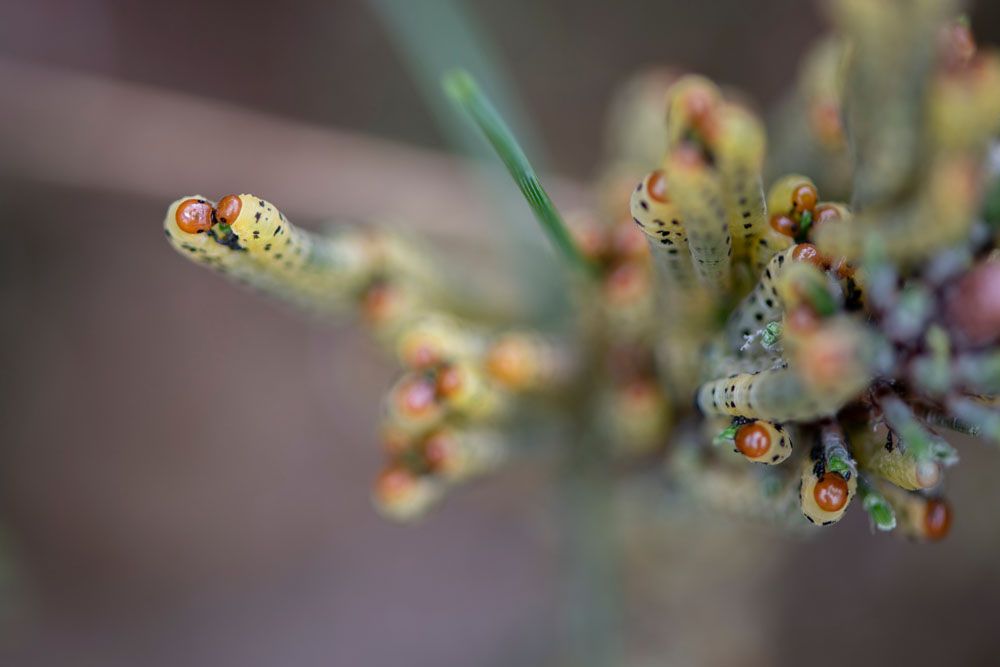
Redheaded Pine Sawfly – Neodiprion lecontei
Redheaded Pine Sawfly (Neodiprion lecontei):
Common Name: Redheaded Pine Sawfly
Latin Name: Neodiprion lecontei
Appearance:
The Redheaded Pine Sawfly (Neodiprion lecontei) undergoes a number of notable changes throughout its life cycle, with each stage involving distinct appearances. These larvae may alter in size and color as they travel through their growth periods, giving them a distinctive identity. The little, oval-shaped eggs are lined up in rows along the pine tree’s needles. The larvae build cocoon-like structures on the host plant when they reach the pupal stage, signalling the beginning of the adult life cycle. With their two pairs of membrane wings, mature Redheaded Pine Sawflies resemble wasps. This variation in appearance during the life cycle of the Redheaded Pine Sawfly highlights the complex transformation that is a part of it.
Host Plant:
Redheaded Pine Sawflies typically infest pine trees of various types. The precise host species might vary, although they are most commonly found on pine trees in the places where they are found.
Territory:
Redheaded Pine Sawflies can be important pests in pine forests in North America. Their distribution varies according to the availability of host plants and appropriate habitats.
Damages caused by Redheaded Pine Sawfly:
The Redheaded Pine Sawfly larval stage is the most dangerous. Larvae feed on pine needles, frequently devouring entire needles, causing the defoliation of pine trees. While healthy trees may usually recover from defoliation, frequent or severe infestations can weaken the trees and make them more vulnerable to other stresses.
Life History and Habitat:
Life Cycle: The Redheaded Pine Sawfly goes through all four steps of metamorphosis: egg, larva, pupa, and adult.
- Egg:It’s springtime, and birds lay their eggs in rows on oak leaves.
- Larva:Larvae hatch from their eggs and eat pine leaves. As they grow, they go through several moults.
- Pupa:The larvae build nets that look like cocoons on the mother plant. This is where they pupate.
- Adult:Sawflies complete their life cycle by coming out of their pupae as adults and laying eggs.
- Habitat:
